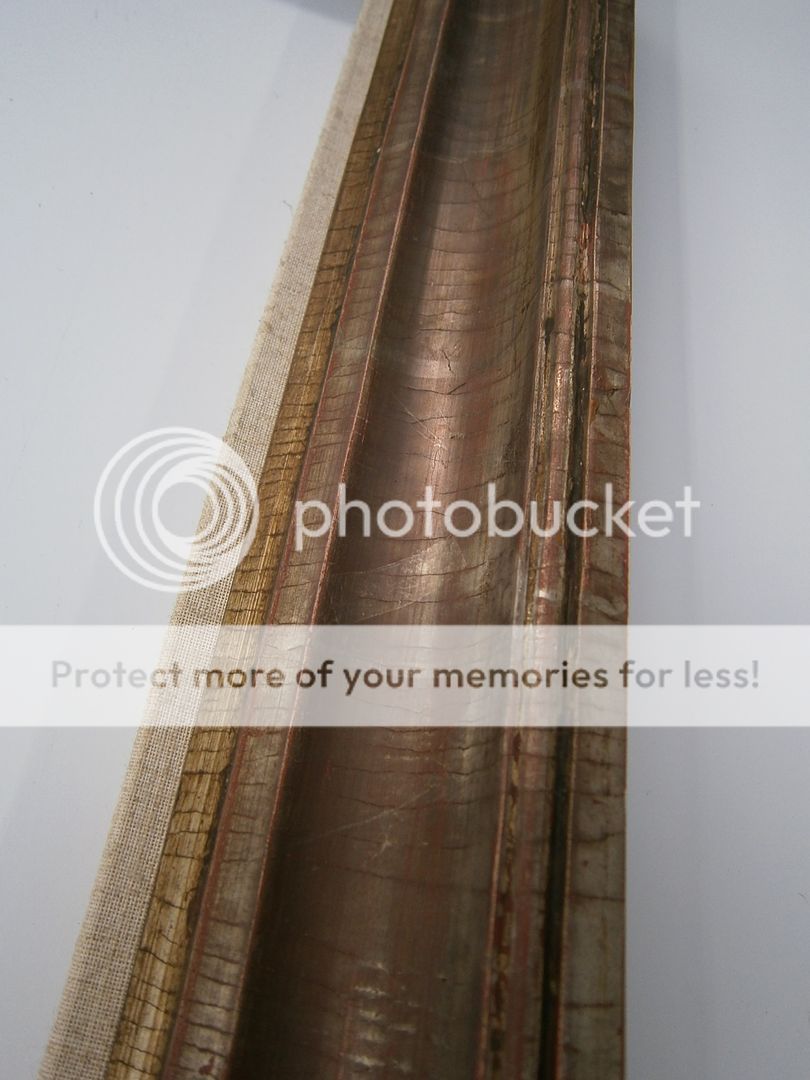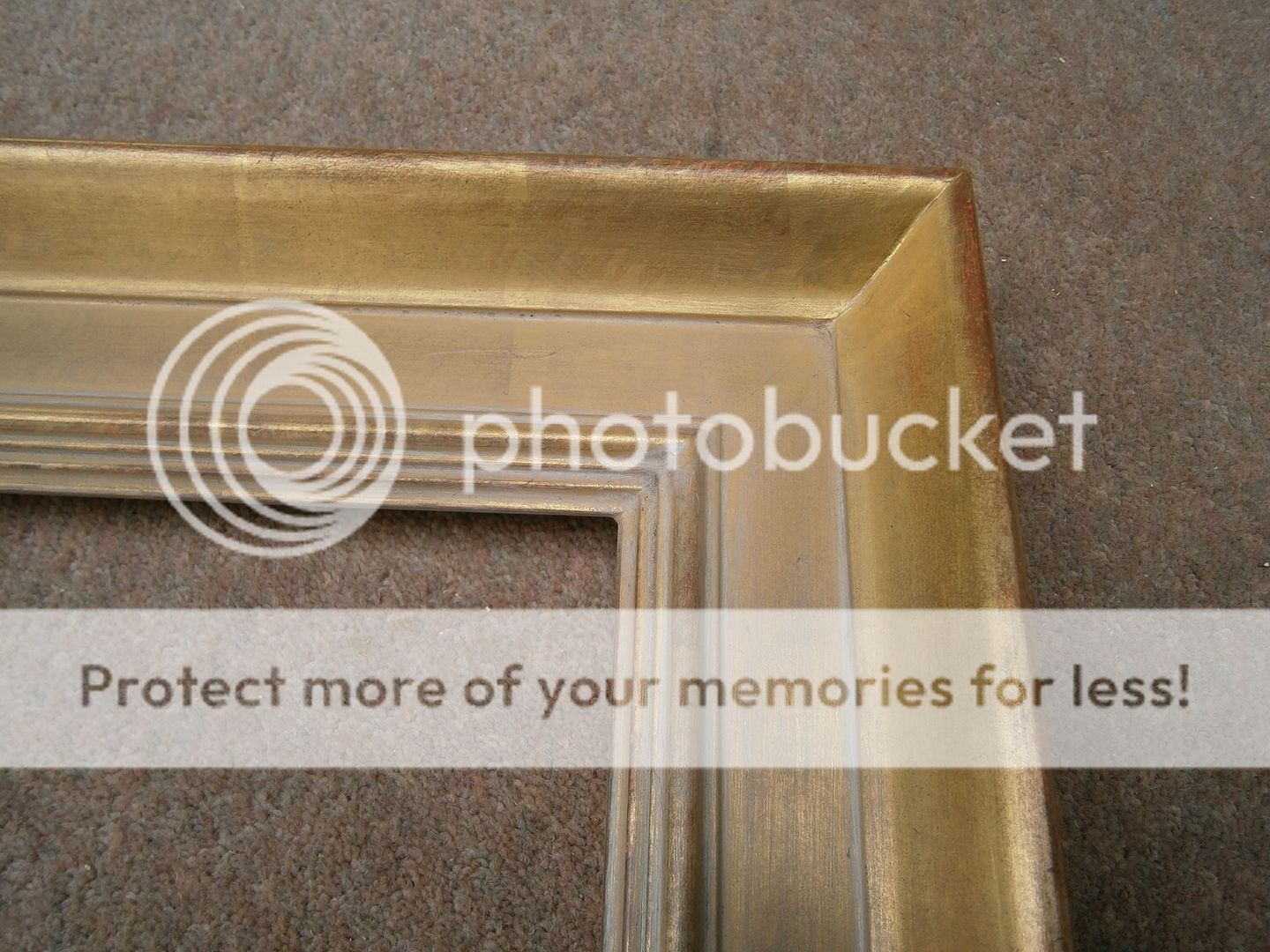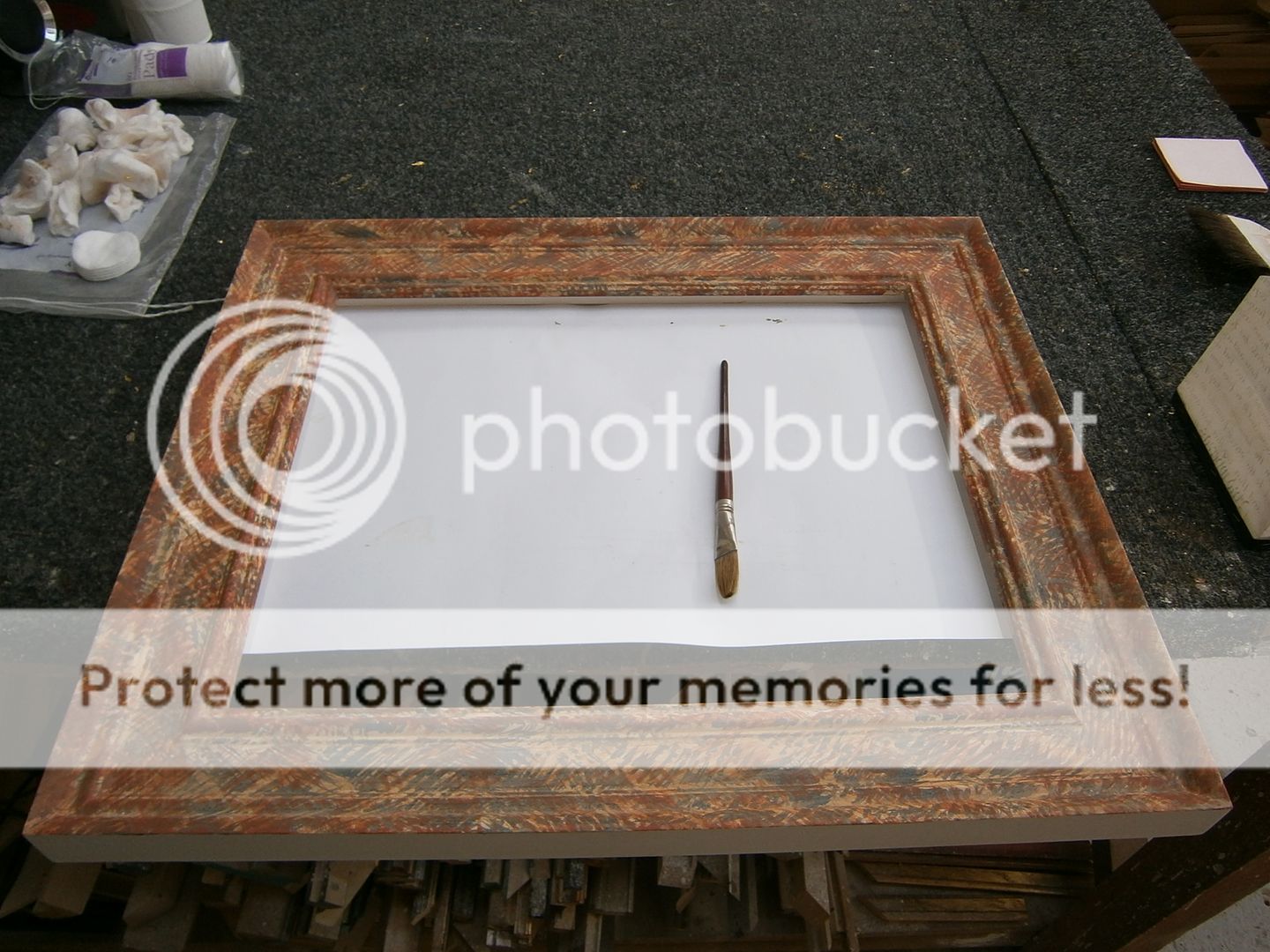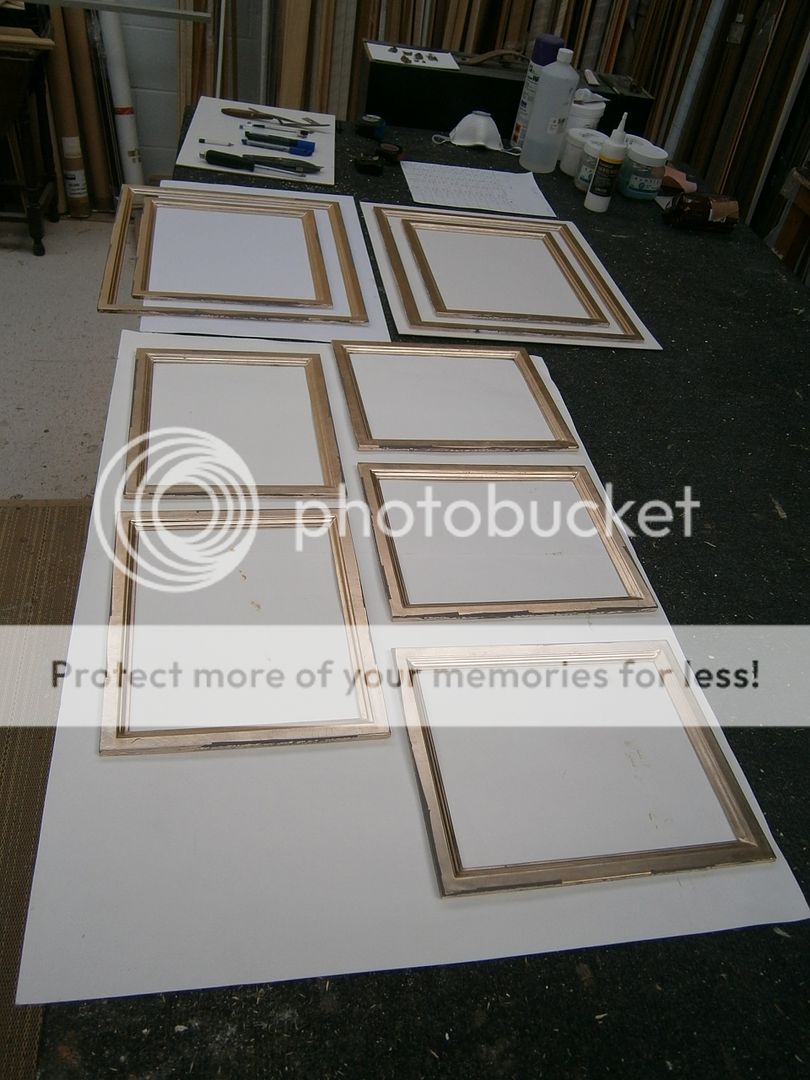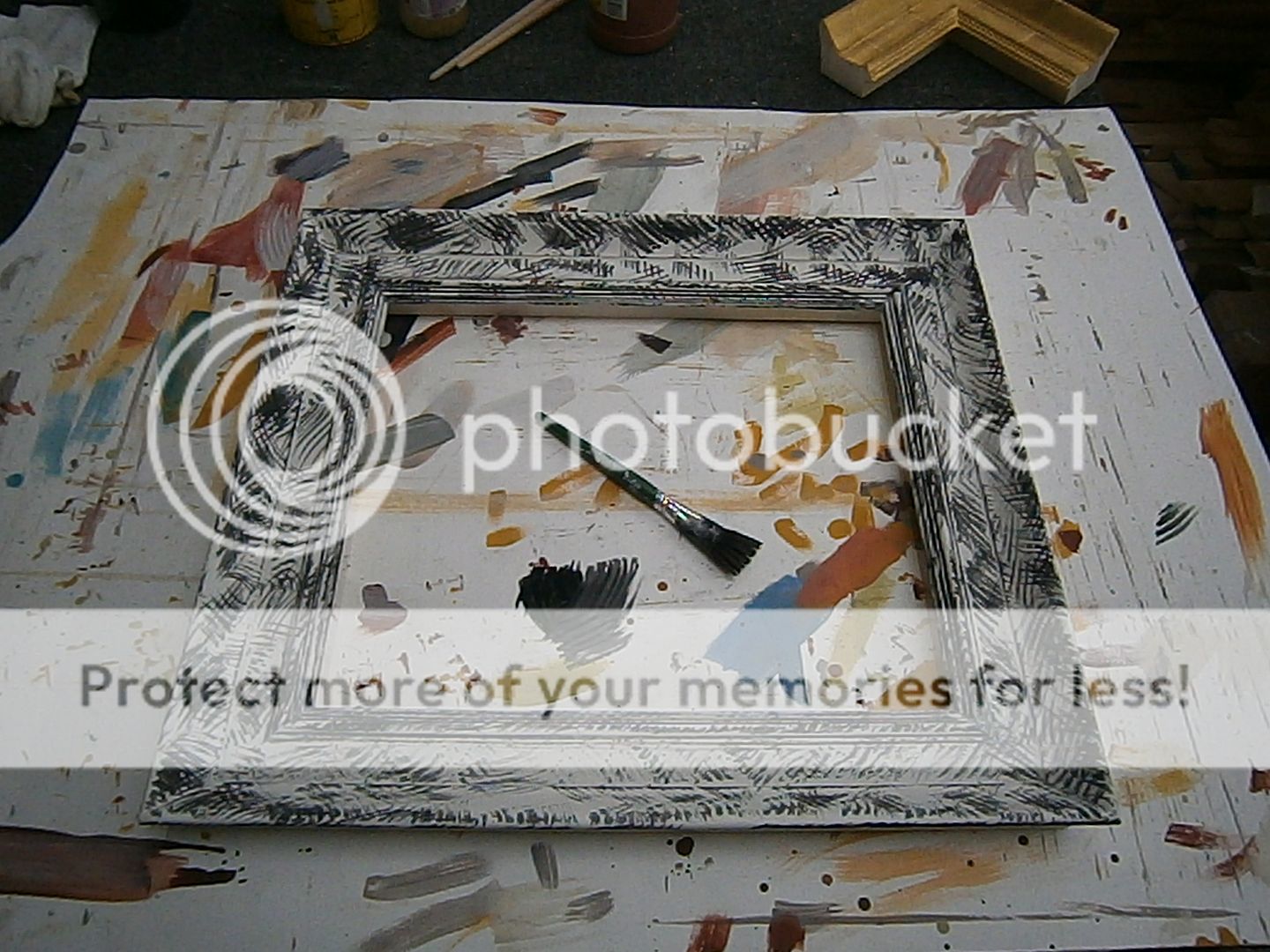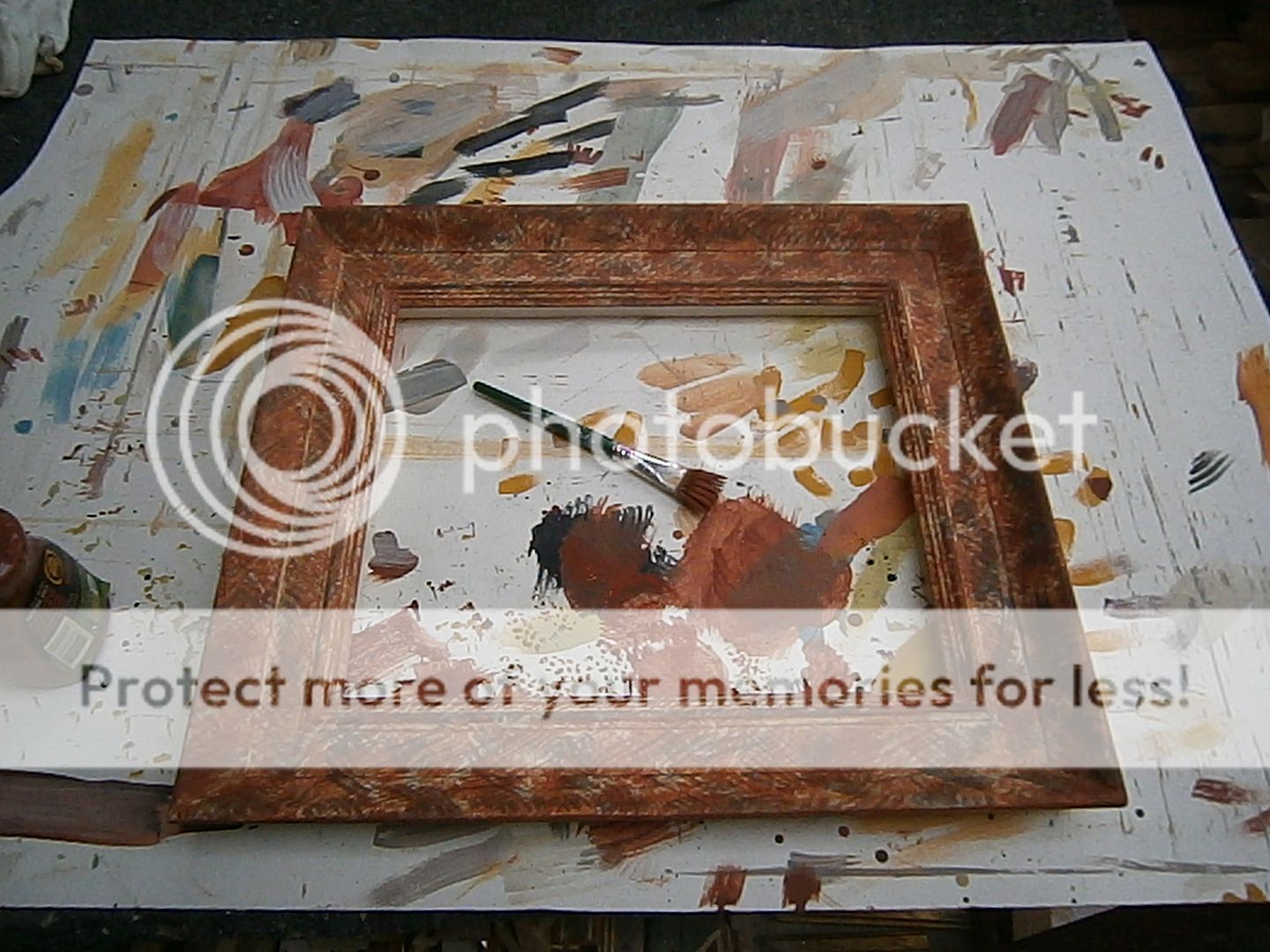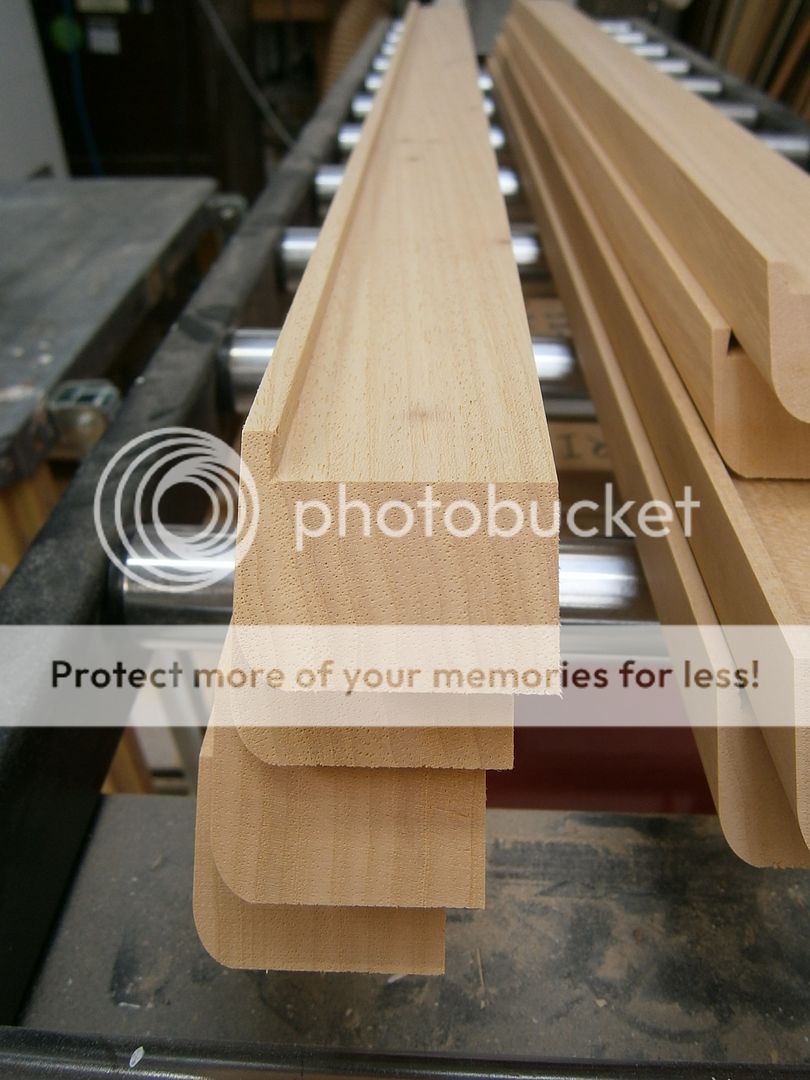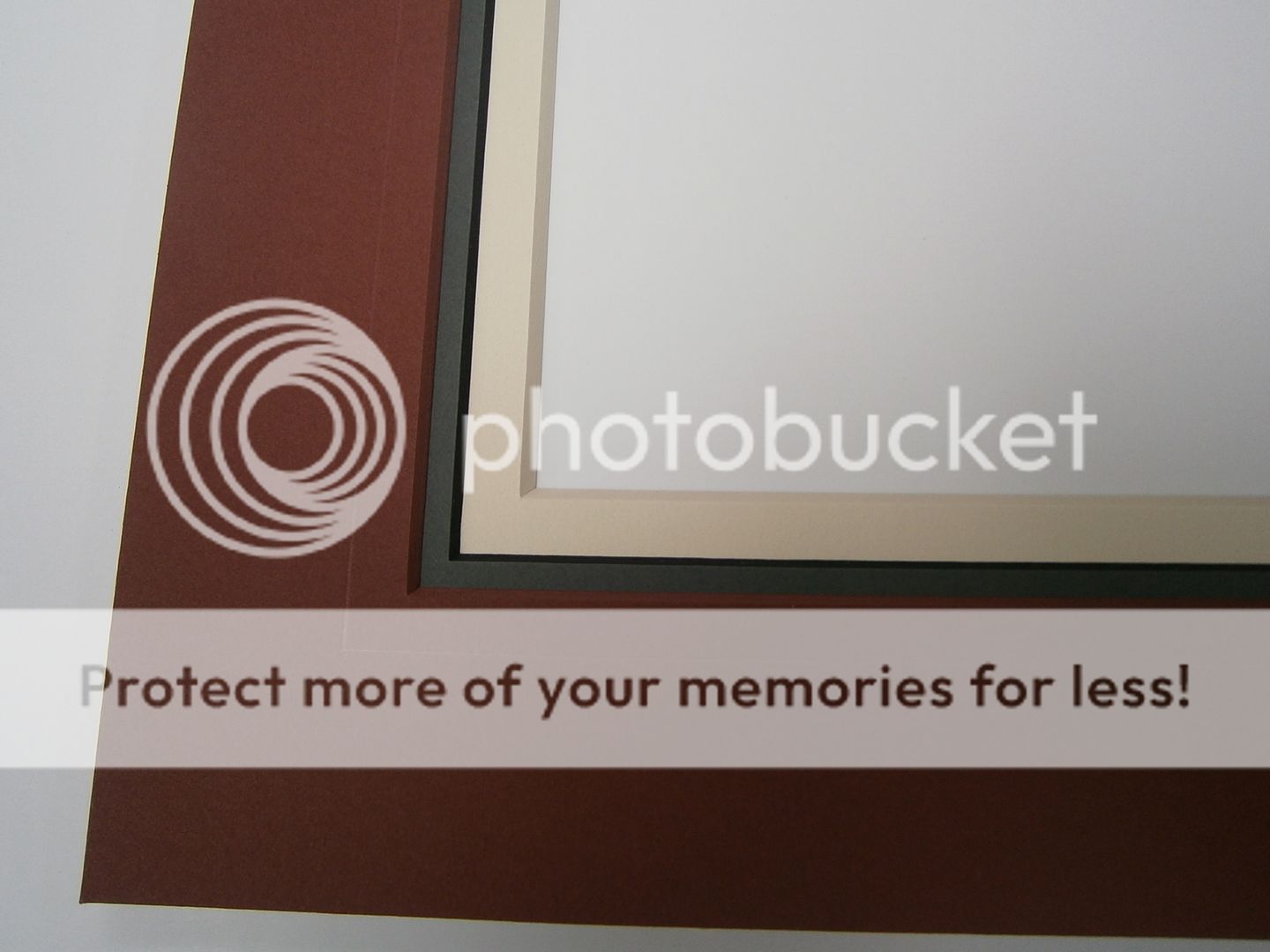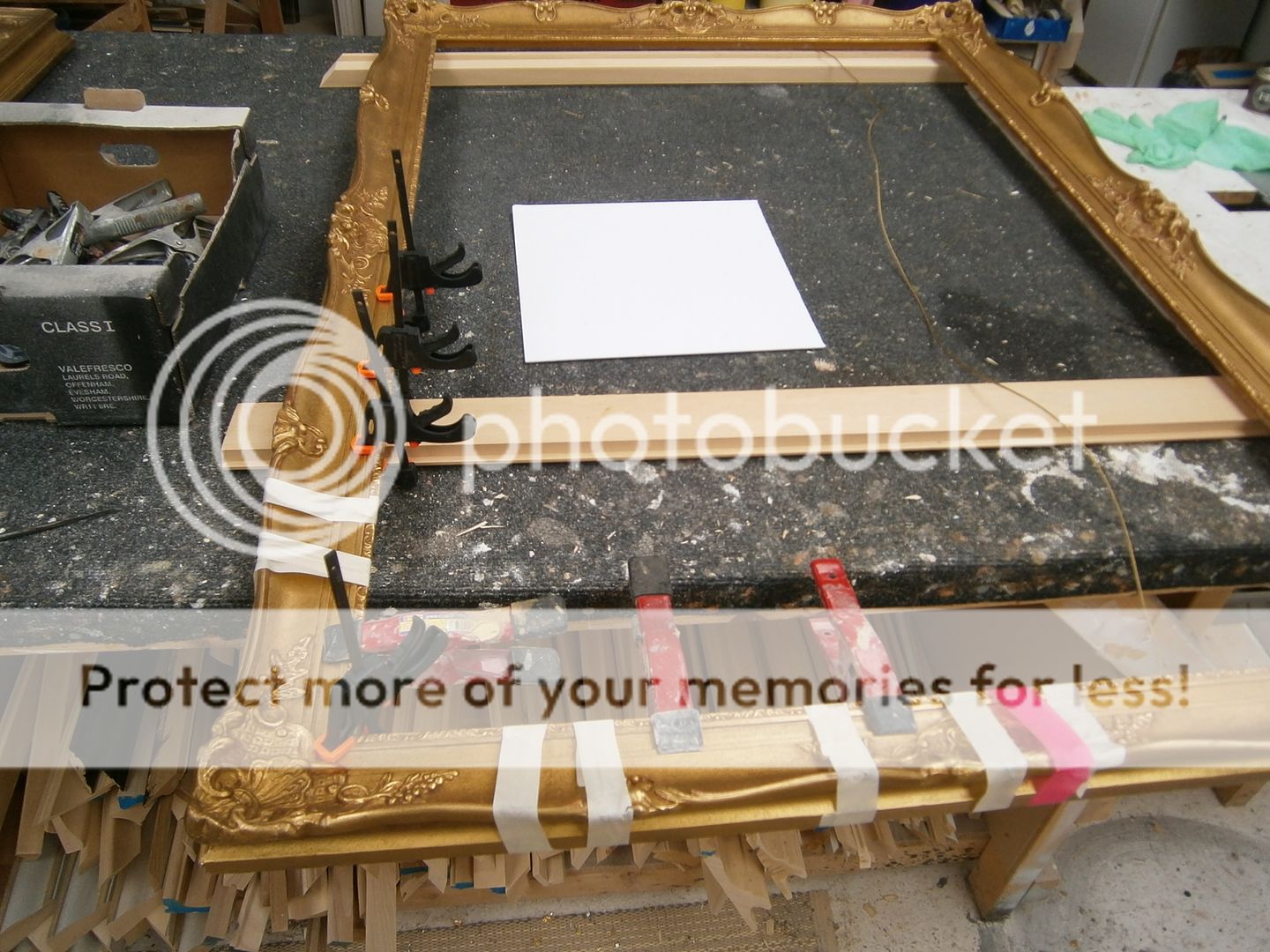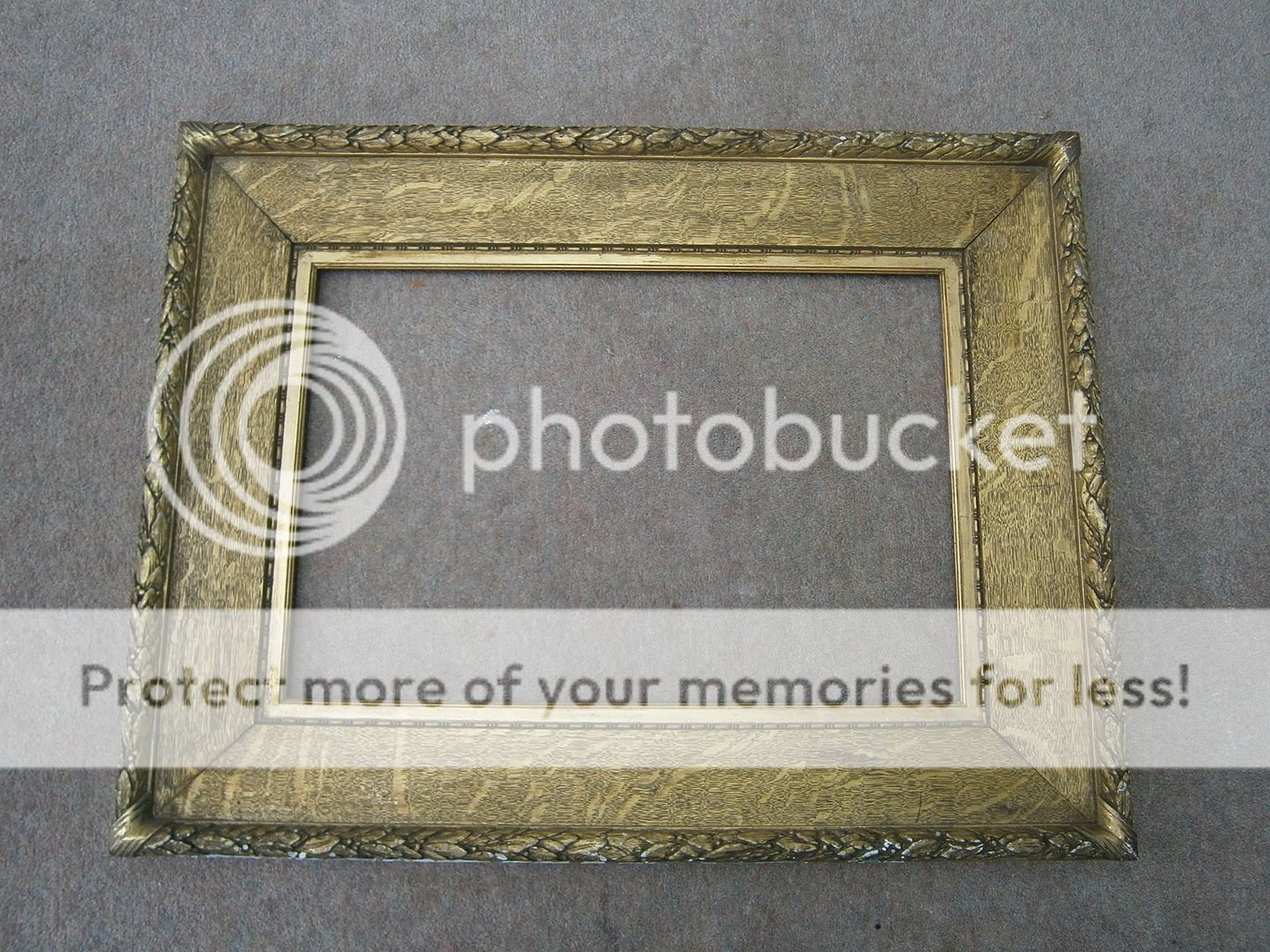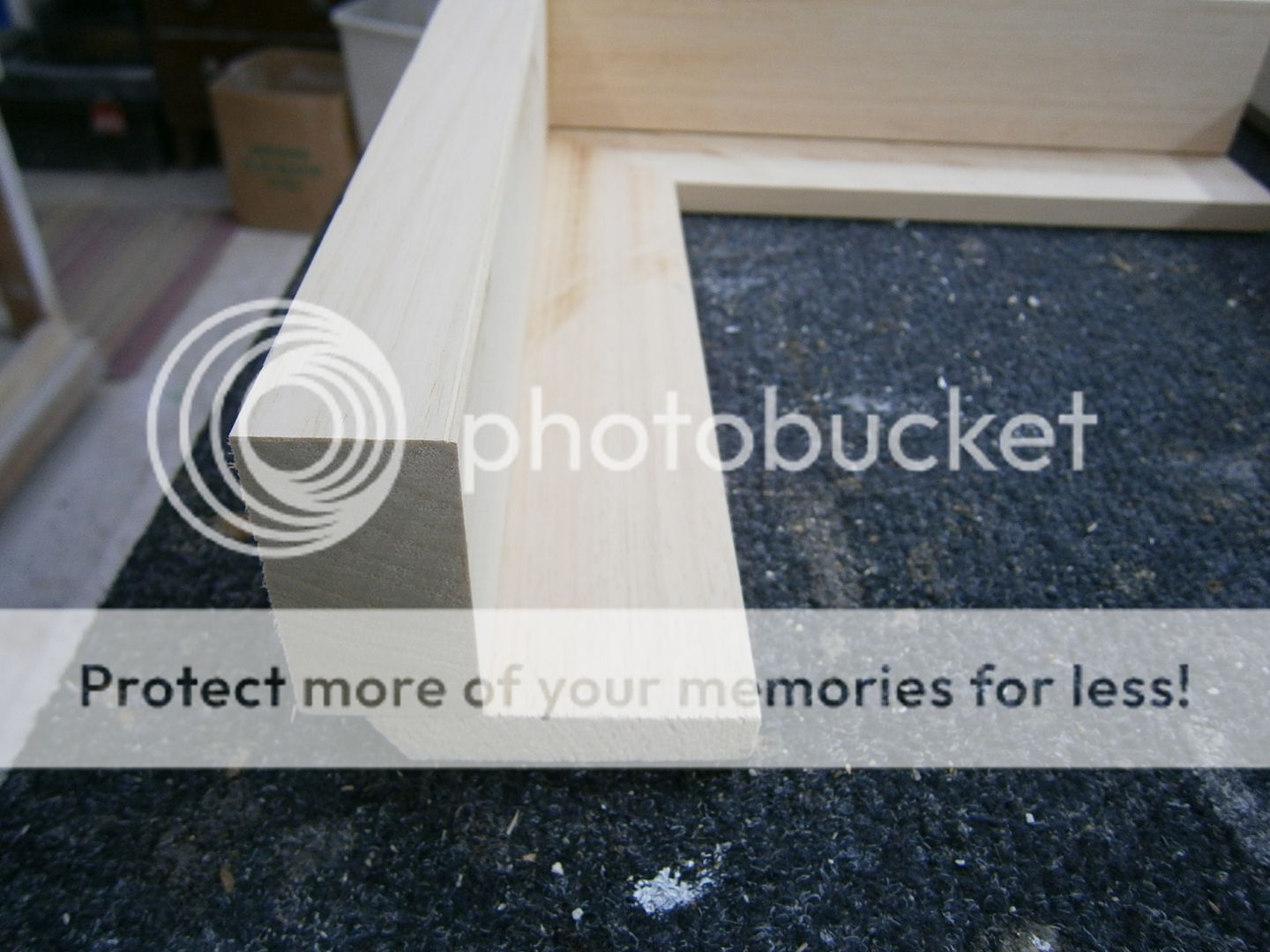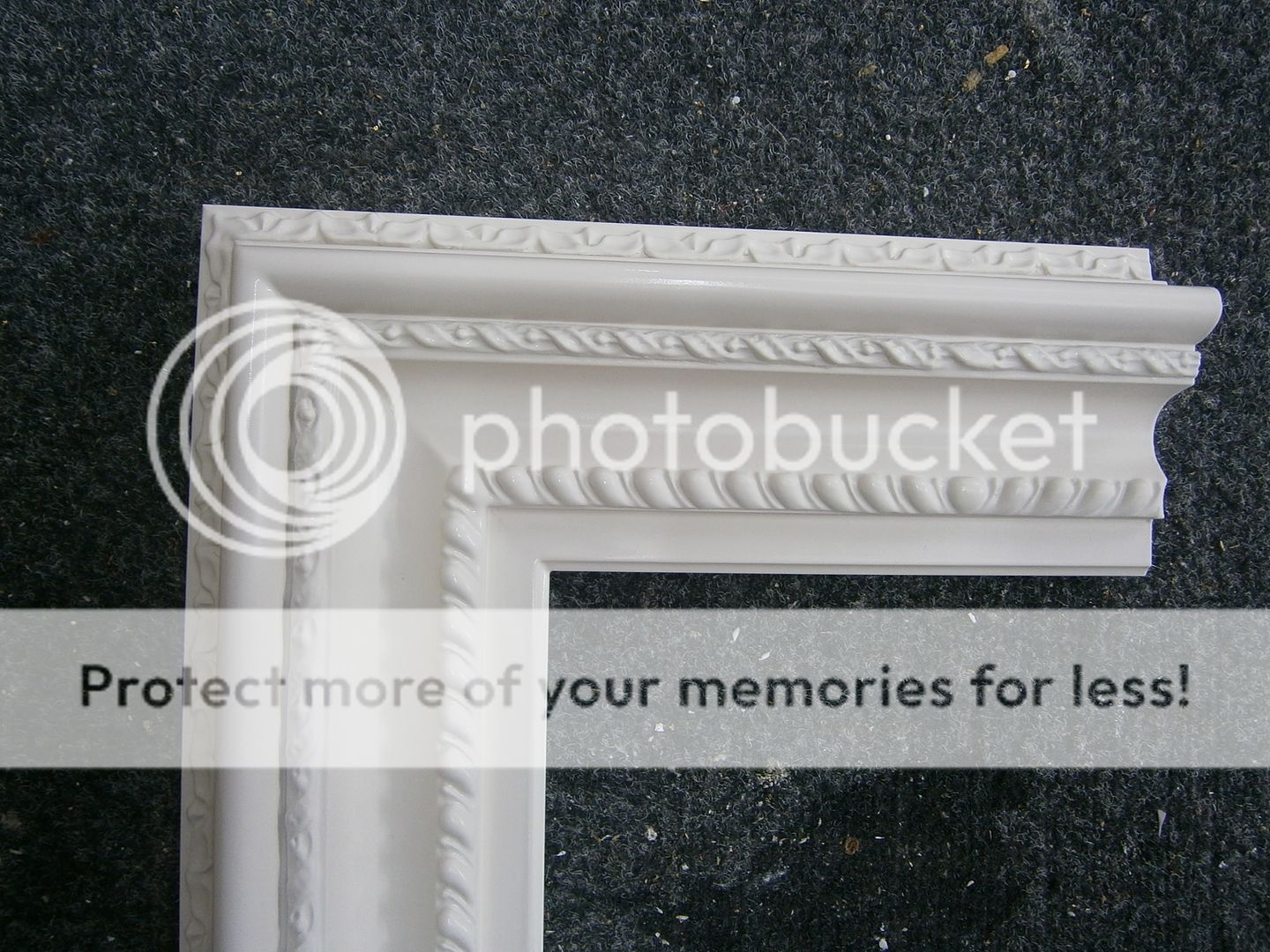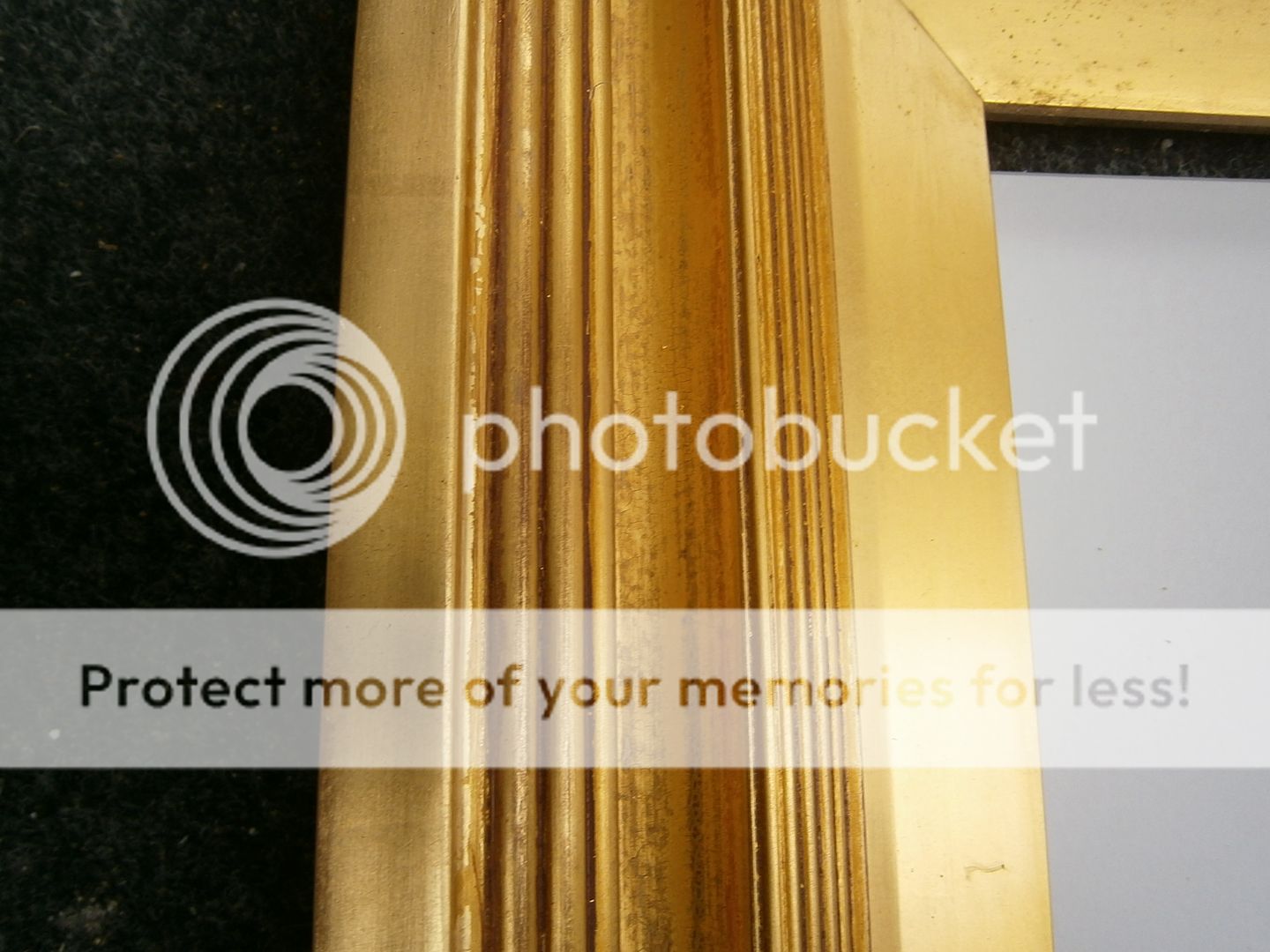The annual 'Voices and Visions' art exhibition in Worcester cathedral features artwork created by pupils from schools and colleges from all across the county of Worcestershire. Children from primary, middle, and high schools as well as colleges and learning centres have created some very creative pieces. This was one of my favourites, a landscape complete with gilt corner and centre frame. the exhibition runs until 16th June 2013.
Friday
20th C silver frame
This silver leaf water gilded frame has come for some minor repairs. It was made sometime during the second half of the 20th Century. I like the tarnished leaf, the colour goes very well with the painting, and the cracked gesso adds a nice aged look.
Labels:
repair,
silver,
water gilded
Gilded frame
This is one of the finished frames that I was gilding yesterday. It is lightly distressed with rottenstone and was finished with a grey-white wash.
Labels:
gold,
water gilded
Cassetta
Here is another frame with varied bole colours, although it is a different profile to the ones from a few posts ago. This frame will be gilded in 12ct white gold. I quite like this effect as a finish in its own right or a variation of it combined with gilded areas and some other finishing effects.
Laying leaf
The various stages of gilding a frame, breaking it down into sections to be laid with leaf. First the outer section and about 1/2" down the outside was done using one leaf (a leaf is 3" x 3") that was cut into two pieces (about 2 1/4" and 3/4"). Next the inner moulding was done using a single piece of half a leaf. The third section to be gilded was the middle flat, using a piece about 1 1/4" wide.
Labels:
water gilded
Wednesday
Multi bole
Gesso frames that have been randomly painted with black bole, then orange, and lastly red. Tomorrow the surface will be polished slightly and then gilded.
Sunday
Rebate size
This moulding has a very narrow rebate width (the dimension from the sight edge to the rebate back edge), it is only about 4mm which is narrower than usual. The frame will surround another moulding and the rebate needs extending to cover a flat edge that is about 12mm wide. I will make the rebate wider using a table saw.
Canvas float
A finished canvas tray float frame, showing the 1/4" gap around the canvas. It is worth pointing out that framing canvases in this way can often be troublesome. Even high quality stretcher bars can be unsquare, this means that measuring the canvas along the edges will appear to give the same dimensions on each side, but the measurement from diagonal corners will show if the bars are square or not. Canvases will also often be slightly narrower in the middle compared to the edges.
The cheaper canvases favoured by many artists are often dramatically unsquare, and even warping in each bar can mean the canvas won't lay level on a flat service.
Labels:
canvas tray,
float frame
Bronze powder paint
This frame has had gesso and orange bole base layers, then with bronze powder gilt on the inner and outer edges. In the second photo I am brushing on a green paint wash on the scoop and sides.
Labels:
bronze powder,
painted
Triple mount
A selection of mounts are being cut in the photo at the top, which were then used to make the triple layered mounts seen above. The inner mount is an extra thick (2000 micron compared to the usual 1500 micron) dull white museum board, in the middle is a dark grey with black core, and the top or outer mount is a solid coloured core museum board with a debossed line.
Monday
Dirty label
This partial label from the back of an antique frame was completely obscured by years of dirt and grime. The top photo shows the label has been wetted with distilled water, I forgot to take a photo before this but you can still see that it was impossible to make out any detail on the label. The water softens the adhesive used to stick the label to the frame (a hide gum type glue) and it is easy to remove from the frame, although it's very fragile.
The label is carefully removed and placed on a piece of long fibre tissue paper which provides support, it is then put in a tray and distilled water is used to soak the label and slowly clean it. This is repeated several times with some hydroxen peroxide also being added in one of the water baths.
The last photo looks much better in reality, and some more cleaning will bring out more of the detail, but we can now at least read the label, the maker was John Kesson at 28 Diamond Street, (Aberdeen), active in the late 19th and early 20th Centuries.
Labels:
antique frame
Saturday
Moon gold
A cove shaped frame with water gilded 22ct moon gold inner and outer edges. Moon gold is made by adding approx 2 parts palladium to 22 parts gold, it has a great colour which is suited to contemporary artwork. Here I am just about to lightly distress the gilded with 0000 wire wool, the scoop and side sections will then be painted.
Labels:
moon gold,
water gilded
Small repairs
One of a matching pair of antique (mid 19th Century) compo frames that need a few minor repairs. I am using Lab Putty by Coltène for making moulds of undamaged areas, so I can then cast new pieces to replace the missing sections of compo.
Labels:
antique frame,
compo,
repairs,
restoration
Grey tray
The canvas tray frame from a few posts ago has been painted with a dark grey paint, it will need a couple of more coats before being sealed with a matt acrylic varnish.
Labels:
canvas tray,
float frame,
painted,
tray
Large silk board
This large piece of ivory silk material has been mounted onto mountboard, it has been left under a sheet of glass to keep it as flat as possible. Next it will be given an iron to reactivate the adhesive and create a strong bond between silk and board.
Split rebate repair
The rebate on this frame was badly split along two sides. The wood is just particularly thin on this part of the frame and it does not take much pressure from the back to split the rebate, in this case just transporting and stacking pictures on top of each other was enough to do the damage.
Overpaint
A good example of overpainting or the touching up of the gilding on parts of a frame with gilt paint. The top photo shows the original gilding with no later applied gold paint. The bottom photo shows this part of the frame has been painted with a gold paint, which has oxidised and tarnished over time, leaving the distinct brown bronze colour. The overpainted section is the bottom length of the frame, which would naturally catch more dust than the top section (the other photo), the bottom section would therefore darken quicker, and through cleaning and wiping over would lose the gilding as it is rubbed away over time.
So years ago someone took some gold paint and painted it on the bottom section to replace the worn away gold, and brighten up this area to try and match the rest of the frame, it would have looked OK for a few years but once it tarnished due to exposure to the air (a sealer or varnish would have helped prevent this) it turned this brown bronze colour and does not look very good. The gold paint has also obscured some of the finer detail in the compo ornament.
Despite this it is a good compo frame, very delicate and fine mouldings make up the profile, two narrow sanded flat sections, and nice acanthus leaf pattern.
Labels:
antique frame,
bronze,
bronze powder,
repair,
restoration
Thursday
Italian antique frame
This lovely little antique frame needs some minor repairs to the gesso, but overall the finish is excellent for a frame that is probably from the 18th Century. It is almost certainly Italian. I will add a slip (an antique one from stock) to make it fit a 19th Century painting. The frame is really perfect for the painting that it will surround.
Labels:
antique frame,
moulding,
repair,
water gilded
Horse racing canvas
This painting on canvas by Jeremy Houghton has been framed in a deep cove frame with silver gilded bevel sight edge.
Labels:
black frame,
cove,
Jeremy Houghton,
silver
Bevel mount slip
The extra thick bevel on the inside of this mount is a wooden slip that is covered in paper, it is then cut to size and joined together in the same way a frame would be joined. The outer or top mount is then cut to size, this is made from 1.5mm thick mountboard. On this slip the paper is plain off white but all sorts of different papers and fabrics can be used.
Labels:
mount,
mount slip
Wednesday
Gilded sample
I did not take a photo of the bole stage, but the colours were Georgian orange and Georgian red with some areas highlighted in black. The top photo is after gilding but before the final faulting, the bottom photo is during the antiquing and distressing stages.
Labels:
carlo maratta,
frame samples,
water gilded
Tuesday
Continental style
This lovely antique 19th Century frame landed in the workshop today, a good example of a composition frame; to my eye anyway it's a lovely example. Nice flat panel with incised designs and Continental Empire style palmette repeating pattern on the main convex section of the moulding, the outer high point is a triple reed with cross ribbons and the corners are finished with some bold leaves.
Labels:
antique frame,
Barbizon,
compo,
Empire
Canvas tray
It is often the case that a moulding is not quite the right depth or width, so a custom profile can be made or an existing moulding can be modified to suit. This canvas tray needed to be a particular width and depth, this was created from an existing moulding which can be seen in the top photo or the right. The face and bevel edge rebate was cut off leaving the basic tray profile that was needed, the section that was cut off was used as the back of the tray, to which the canvas will be screwed.
Labels:
canvas tray,
float frame
Spray gesso sample
This Carlo Maratta sample has been given a couple of coats of gesso, this fills in the finer detail of the ornament a little, but personally I think this slight rounding and blending in of the ornament gives a more carved or hand crafted appearance. I think some compo ornamented frames both new repro and antique, have ornament which can look a little bit mass produced, with unbalanced designs which just look excessive. On really good carved frames the gesso would be recut around the ornament, and the detail sharpened up with metal tools to give real crisp definition to the carving.
Labels:
carlo maratta,
frame samples,
gesso
Regilded
This is the antique frame from a few posts ago, the outer section has been gilded, it was then distressed lightly and given some toning to blend in with the existing gilding on the frame.
Labels:
repair,
restoration,
water gilded
Monday
Stacked frame samples
A couple of new frame samples, both cassetta profiles. The top one is simple and will be quite contemporary, it is made from three mouldings. The bottom one is more classical with an egg and dart outer section which sits on top of a flat slip with shot beading, a mitre leaf will go over the egg and dart moulding. The flat middle section is oak which is butt jointed instead of mitred, and the inner frame is a normal moulding cut backwards to use the rebate the other way round to normal.
Labels:
cassetta,
frame samples,
oak



